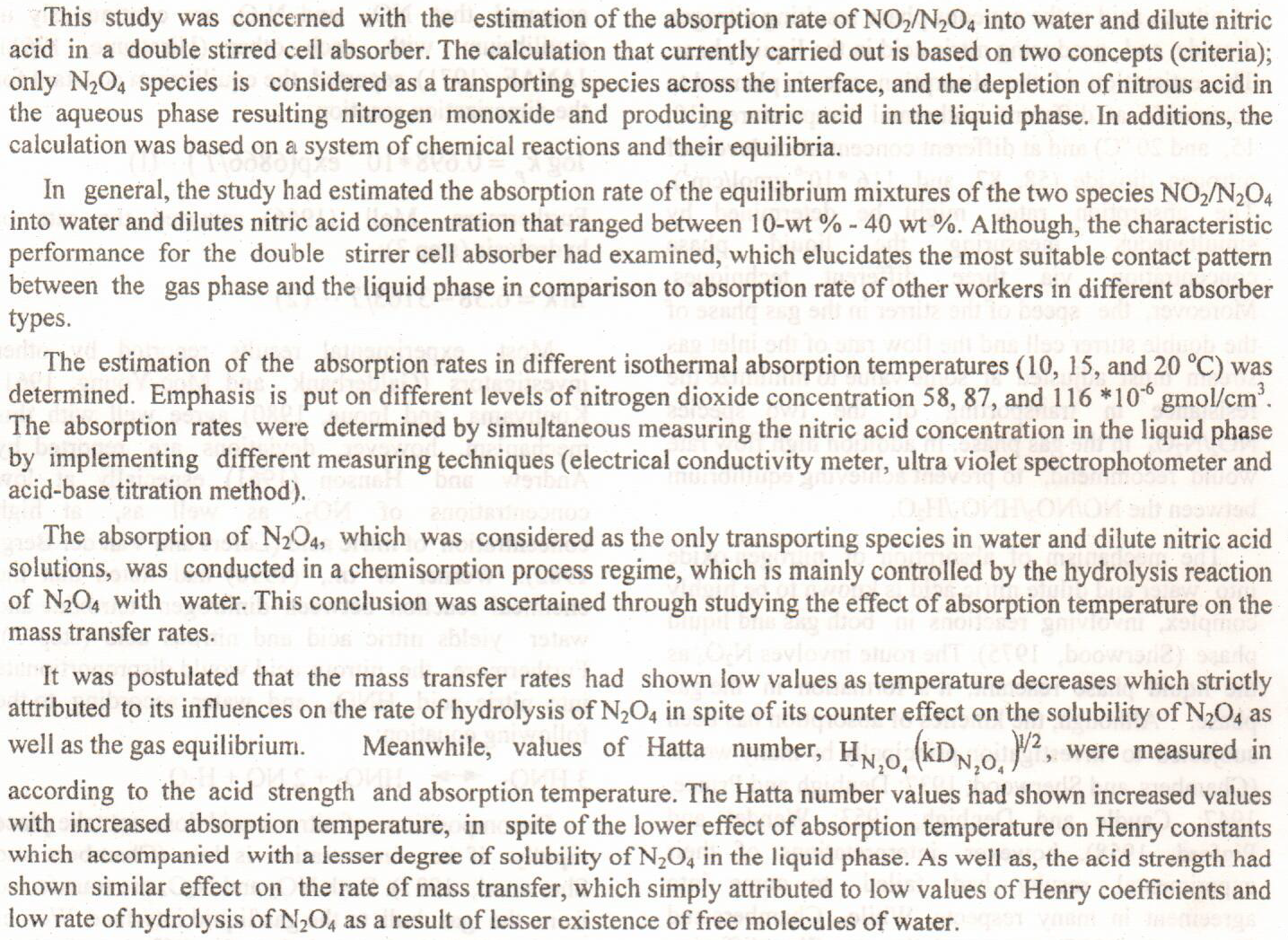
Perfluorooctanoic acid (PFOA) is a synthetic fluor-surfactant chemical used widely in products that resist oil, heat, grease, stains, and water. It is also used in producing other fluoropolymers. The main sources of exposure to PFOA are water, soil, and animal-origin food (meat, fish, and dairy products). The aim of this study to evaluate the renal function following oral gavage of sub-lethal dose of PFOA in diabetic and non-diabetic guinea pigs. The experiment run for 4 weeks, total of 40 male guinea pigs, (Cavia porcellus), were randomly selected and grouped into four equal groups. The first group (G1) served as the negative control; 2nd group (G2) alloxan induced diabetic, 3rd group (G3) non-diabeti
... Show More (2)
(2)
Diabetes mellitus, with adverse neonatal events are challenging issues to all obstetricians and pediatricians, where uric acid could play a vital role. We aimed to assess the relationship and prognostic benefits of serum uric acid measured at about 20 weeks’ gestation in normotensive pregnancy, with subsequent maternal diabetes, and neonatal complications. All singleton normotensive pregnant women with normal blood glucose, serum creatinine, and weight before pregnancy, whom attended Medical City Hospital, Department of Obstetrics and Gynecology in Baghdad, were involved and regarded as the case group, on the condition that their serum uric acid measured at 20 weeks’ gestation > 3 mg/dl, but if ≤ 3 mg/dl, they would be regi
... Show More (9)
(9)
 (5)
(5)
In this work, an experimental study has been done to expect the heat characteristics and performance of the forced-convection from a heated horizontal rectangular fins array to air inside a rectangular cross-section duct. Three several configurations of rectangular fins array have been employed. One configuration without notches and perforations (solid) and two configurations with combination of rectangular-notches and circular-perforations for two various area removal percentages from fins namely 18% notches-9% perforations and 9% notches-18% perforations are utilized. The rectangular fins dimensions and fins number are kept constant. The fins array is heated electrically from the base
... Show Moresingle and binary competitive sorption of phenol and p-nitrophenol onto clay modified with
quaternary ammonium (Hexadecyltrimethyl ammonium ) was investigated to obtain the
adsorption isotherms constants for each solutes. The modified clay was prepared from
blending of local bentonite with quaternary ammonium . The organoclay was characterized
by cation exchange capacity. and surface area. The results show that paranitrophenol is
being adsorbed faster than phenol . The experimental data for each solute was fitted well with
the Freundlich isotherm model for single solute and with the combination of Freundlich-
Langmuier model for binary system .
 (2)
(2)
The green synthesis of nickel oxide nanoparticles (NiO-NP) was investigated using Ni(NO3)2 as a precursor, olive tree leaves as a reducing agent, and D-sorbitol as a capping agent. The structural, optical, and morphology of the synthesized NiO-NP have been characterized using ultraviolet–visible spectroscopy (UV-Vis), X-ray crystallography (XRD) pattern, Fourier transform infrared spectroscopy (FT-IR) and scanning electron microscope (SEM) analysis. The SEM analysis showed that the nanoparticles have a spherical shape and highly crystalline as well as highly agglomerated and appear as cluster of nanoparticles with a size range of (30 to 65 nm). The Scherrer relation has been used to estimate the crystallite size of NiO-NP which ha
... Show More (26)
(26)
 (20)
(20)
A charge transfer complex formed by interaction between nitron as electron donor with curcumin(1 ) as electron acceptor in ethanol at the temperature of theroom to form a colored complex. The optimum conditions of complex formation were investigated by Univariate method. The linearity range of complex was (3.124– 53.11) μg.mL-1 at 442 nm with molar absorptivity (1858.33) L.mol-1.cm-1, Sandell's sensitivity (0.1681μg.cm-2), and with a correlation coefficient (0.9935). Both modified attapulgite and modified attapulgite – complex have been characterized by using , FTIR, SEM, AFM, and XRD. Theadsorption behaviourof complex onto the modified attapulgite has been researchedthrough the variation of the parameters like the adsorbent weight, p
... Show MoreTanuma and Zubair formations are known as the most problematic intervals in Zubair Oilfield, and they cause wellbore instability due to possible shale-fluid interaction. It causes a vast loss of time dealing with various downhole problems (e.g., stuck pipe) which leads to an increase in overall well cost for the consequences (e.g., fishing and sidetrack). This paper aims to test shale samples with various laboratory tests for shale evaluation and drilling muds development. Shale's physical properties are described by using a stereomicroscope and the structures are observed with Scanning Electron Microscope. The shale reactivity and behavior are analyzed by using the cation exchange capacity testing and the capillary suction test is
... Show More (6)
(6)
In this study, composite materials consisting of Activated Carbon (AC) and Zeolite were prepared for application in the removal of methylene blue and lead from an aqueous solution. The optimum synthesis method involves the use of metakaolinization and zeolitization, in the presence of activated carbon from kaolin, to form Zeolite. First, Kaolin was thermally activated into amorphous kaolin (metakaolinization); then the resultant metakaolin was attacked by alkaline, transforming it into crystalline zeolite (zeolitization). Using nitrogen adsorption and SEM techniques, the examination and characterization of composite materials confirmed the presence of a homogenous distribution of Zeolite throughout the activated carbon.
... Show MoreIn spite of increasing clinical cases which caused by enteroviruses transferred by water and no documents about entericviruses in the Iraqi water standards. The use of coliphages as an indicator of enteroviruses and fecal pollution were suggested two procedures were applied . The first is Two-Step Enrichment Method and the second is Single Agar Layer Method. Both methods gives good results in Identification of coliphages through testing fifty different water samples (Tap water, Surface water and Bottled water) the study shows the presence of coliphages in fourteen samples.
 (10)
(10)
